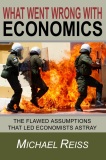I'm writing this blog entry as a discussion point. Please don't take it as definitive.
I have long been dissatisfied by MMT'ers. Listening to them just hasn't rung true. And I've never quite been able to work out why... but now I have a hunch... its all to do with the difference between "base money" and "broad money", or as I like to think of it "everlasting tokens" and "spendable IOU's". If you are not familiar with these concepts, please watch this.
MMT'ers appear to believe that the world revolves around base money (everlasting tokens), despite the fact that over 95% of the money in the economy is broad money. The reason for this they would say is that when man A buys $1000 worth of stuff from man B, then the transaction is not complete until $1000 of base money is transferred from A's bank to B's bank. But this is (mostly) untrue. If for example A and B both are with the same bank, then no base money need get transferred anywhere. It would be purely the bank's spendable IOU's or broad money that would be transferred from A to B. Even if bank A and bank B were different, so long as they are reasonably large, then any base money settlement between the banks will be done at the end of the day and will involve a sum corresponding to the net balance of transfers between them. If there were thousands of transactions between bank A and bank B some in one direction and some in the other, then the net transfer of base money will likely be only a tiny fraction of the total amount exchanged.
People's propensity to spend money (and therefore the overall demand) depends critically on the amount of broad money that they earn and/or possess in the bank. Therefore, unlike what MMT'ers would have you believe, it is the amount of broad money that dominates the behaviour of the economy. And don't forget it is perfectly possible, at least in the short and medium term, for the amount of base money and the amount of broad money to be quite uncorrelated, one can rise as the other one falls and vice versa.
Feel free to leave comments. I will read them carefully and may write a followup blog addressing whatever comes up.
Tuesday, 11 March 2014
Subscribe to:
Post Comments (Atom)




I will bite :)
ReplyDeleteThe circuitist model of horizontal money as you have here is correct. MMT points out that it is incomplete in that money is a public monopoly. Banks are the govts fiscal agents. Govt itself has no solvency issue so has much larger policy space.
What MMT does (unlike circuitists) is consolidate treasury and the central bank...don't like that? Well govt do it themselves check out Whole of Government Accounts WGA.
As MMT is an endogenous money school it quite explicitly states that base money does not control broad money...that is monetarists & quantity theory of money dogma.
HTH.